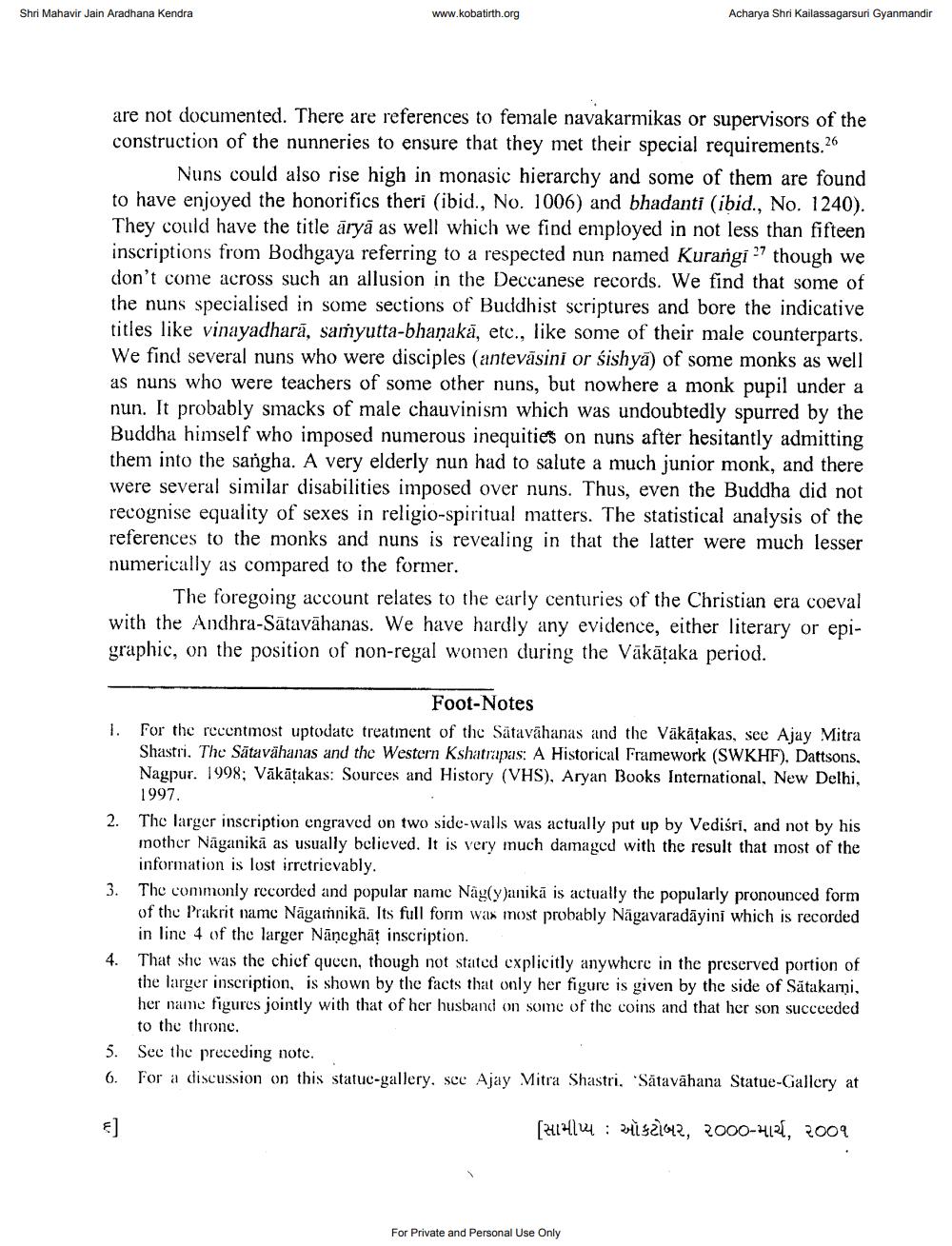________________
Shri Mahavir Jain Aradhana Kendra
www.kobatirth.org
are not documented. There are references to female navakarmikas or supervisors of the construction of the nunneries to ensure that they met their special requirements.26
Acharya Shri Kailassagarsuri Gyanmandir
Nuns could also rise high in monasic hierarchy and some of them are found to have enjoyed the honorifics theri (ibid., No. 1006) and bhadanti (ibid., No. 1240). They could have the title äryä as well which we find employed in not less than fifteen inscriptions from Bodhgaya referring to a respected nun named Kurangi " though we don't come across such an allusion in the Deccanese records. We find that some of the nuns specialised in some sections of Buddhist scriptures and bore the indicative titles like vinayadhara, samyutta-bhanaka, etc., like some of their male counterparts. We find several nuns who were disciples (anteväsini or ŝishya) of some monks as well as nuns who were teachers of some other nuns, but nowhere a monk pupil under a nun. It probably smacks of male chauvinism which was undoubtedly spurred by the Buddha himself who imposed numerous inequities on nuns after hesitantly admitting them into the sangha. A very elderly nun had to salute a much junior monk, and there were several similar disabilities imposed over nuns. Thus, even the Buddha did not recognise equality of sexes in religio-spiritual matters. The statistical analysis of the references to the monks and nuns is revealing in that the latter were much lesser numerically as compared to the former.
The foregoing account relates to the early centuries of the Christian era coeval with the Andhra-Satavahanas. We have hardly any evidence, either literary or epigraphic, on the position of non-regal women during the Väkäṭaka period.
Foot-Notes
1. For the recentmost uptodate treatment of the Satavahanas and the Väkäṭakas, see Ajay Mitra Shastri. The Satavahanas and the Western Kshatrapas: A Historical Framework (SWKHF), Dattsons, Nagpur. 1998; Vākāṭakas: Sources and History (VHS), Aryan Books International, New Delhi, 1997.
2. The larger inscription engraved on two side-walls was actually put up by Vediśri, and not by his mother Nāganikā as usually believed. It is very much damaged with the result that most of the information is lost irretrievably.
3. The commonly recorded and popular name Nagyjanika is actually the popularly pronounced form of the Prakrit name Nagamnika. Its full form was most probably Nagavaradayini which is recorded in line 4 of the larger Naneghat inscription.
4. That she was the chief queen, though not stated explicitly anywhere in the preserved portion of the larger inscription, is shown by the facts that only her figure is given by the side of Satakami, her name figures jointly with that of her husband on some of the coins and that her son succeeded to the throne.
€]
5. See the preceding note.
6.
For a discussion on this statue-gallery, see Ajay Mitra Shastri. Satavahana Statue-Gallery at
સામીપ્સ : ઓકટોબર, ૨૦૦૦-માર્ચ, ૨૦૧
For Private and Personal Use Only




